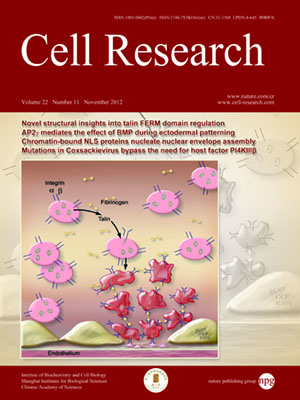
Advanced Search
Submit Manuscript
Advanced Search
Submit Manuscript
Volume 22, No 11, Nov 2012
ISSN: 1001-0602
EISSN: 1748-7838 2018
impact factor 17.848*
(Clarivate Analytics, 2019)
Volume 22 Issue 11, November 2012: 1576-1592
Hilde M van der Schaar1,*, Lonneke van der Linden1,2,*, Kjerstin H W Lanke1, Jeroen R P M Strating3, Gerhard P黵stinger3, Erik de Vries4, Cornelis A M de Haan4, Johan Neyts
2Laboratory of Virology and Chemotherapy, Rega Institute for Medical Research, University of Leuven, B-3000 Leuven, Belgium;
3Institut f黵 Pharmazie, Abteilung Pharmazeutische Chemie, Universit鋞 Innsbruck, A-6020 Innsbruck, Austria;
4Department of Infectious Diseases and Immunology, Virology Division, Faculty of Veterinary Medicine, Institute of Biomembranes, Utrecht University, 3508 TD Utrecht, The Netherlands
Correspondence: Frank JM van Kuppeveld,(f.vankuppeveld@ncmls.ru.nl)
RNA viruses can rapidly mutate and acquire resistance to drugs that directly target viral enzymes, which poses serious problems in a clinical context. Therefore, there is a growing interest in the development of antiviral drugs that target host factors critical for viral replication, since they are unlikely to mutate in response to therapy. We recently demonstrated that phosphatidylinositol-4-kinase IIIβ (PI4KIIIβ) and its product phosphatidylinositol-4-phosphate (PI4P) are essential for replication of enteroviruses, a group of medically important RNA viruses including poliovirus (PV), coxsackievirus, rhinovirus, and enterovirus 71. Here, we show that enviroxime and GW5074 decreased PI4P levels at the Golgi complex by directly inhibiting PI4KIIIβ. Coxsackievirus mutants resistant to these inhibitors harbor single point mutations in the non-structural protein 3A. These 3A mutations did not confer compound-resistance by restoring the activity of PI4KIIIβ in the presence of the compounds. Instead, replication of the mutant viruses no longer depended on PI4KIIIβ, since their replication was insensitive to siRNA-mediated depletion of PI4KIIIβ. The mutant viruses also did not rely on other isoforms of PI4K. Consistently, no high level of PI4P could be detected at the replication sites induced by the mutant viruses in the presence of the compounds. Collectively, these findings indicate that through specific single point mutations in 3A, CVB3 can bypass an essential host factor and lipid for its propagation, which is a new example of RNA viruses acquiring resistance against antiviral compounds, even when they directly target host factors.
Cell Research (2012) 22:1576-1592. doi:10.1038/cr.2012.129; published online 4 September 2012